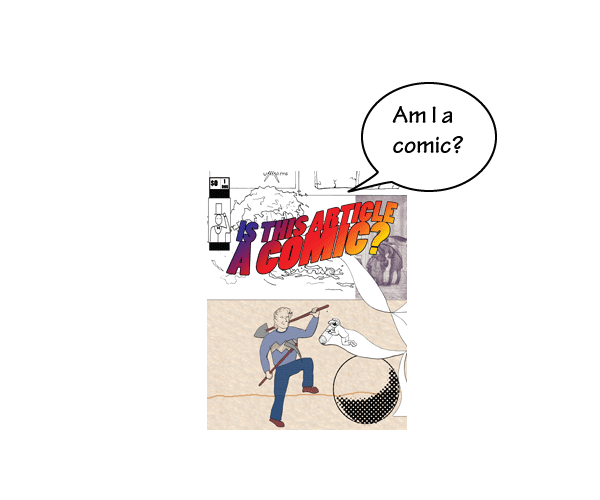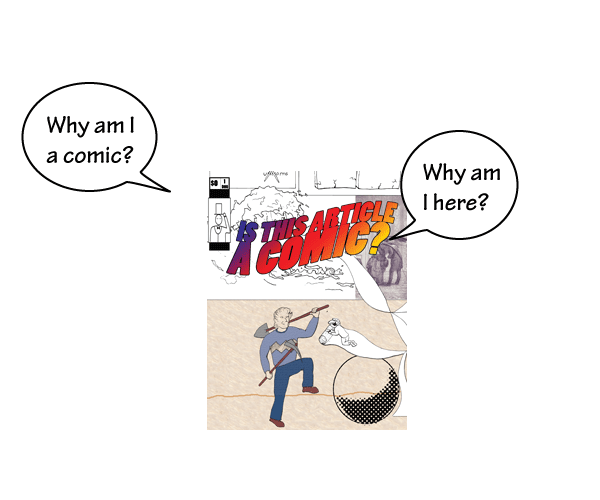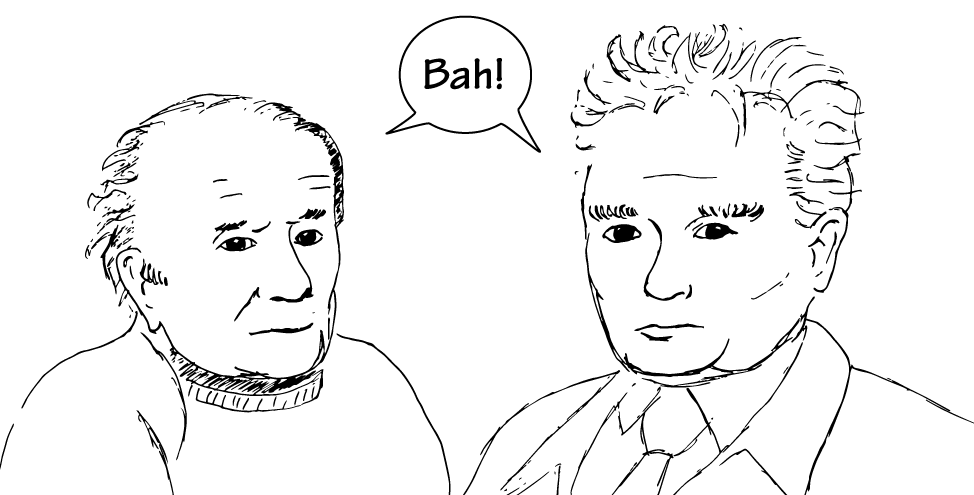
Is This Article a Comic?
part one: reasons for intervention
The long history of attempts to define comics would show us many examples that would include it and many that would exclude it. We will investigate those in a moment.
First, though, allow me to pretend that it is. This article, along with those that accompany it in this special issue, acts as a post-critical intervention in comic studies. This brings us to two more significant questions:

Why would such an endeavor find itself at home in a journal devoted to the digital humanities? There are a variety of ways we might answer that question. The digital humanities, we have been reminded, is a big tent (Spiro, Svensson). Comics studies, a humanist enterprise, is finding ways to also be digital. This can mean online journals, new media delivery, image tagging, data mining, and any number of as yet unimagined exercises. However, the simplest answer is Stephen Ramsay’s: “Digital Humanities is about building things” (“Who’s In and Who’s Out”).
This essay and, I would imagine, the other essays in this special issue are all things that were built. I drew things. I scanned those things and digitally altered them. I added interactivity with Adobe Edge Animate and glued it all together with Adobe Muse. It involved a bit of coding in JavaScript, HTML, and CSS. Some of that code was generated by software and some of it by me. Comics, while not often quantitative, can be seen as a kind of visualization: giving meaning to information by creating visuals. Given Ramsay’s later broadening of the term “building” (“On Building”), it’s safe to say that this project is part of the digital humanities.
Owing to the specialization of these terms, I will venture to contextualize post-criticism and intervention before continuing on to discuss recent post-critical interventions in the arts and humanities. The term post-criticism comes from Greg Ulmer's 1983 essay, "The Object of Post-Criticism."
The devices of modernism become methods for critique.
Ulmer’s theorizes that post-criticism operates through the same devices as the objects it critiques, primarily through collage and montage.
While in this essay Ulmer is content to practice these methods textually, his subsequent books on criticism and pedagogy argue that to practice post-criticism, one must not just do critiques of new media but do critique as new media.
Ulmer’s concept of post-criticism is built on Jacques Derrida’s critique of representation.

I will end this essay by building a parallel concept of comics based instead on Gilles Deleuze’s critique of representation.
We have seen that there is a need for creative interventions in scholarship. The way we compose our scholarship changes the our thinking, allows us new avenues for thought. So, there is some need for this digital intervention. But is it a comic? In order to answer that, we will have to determine what a comic is. As the next section shows, this is not quite as easy as it sounds.
On to Geology